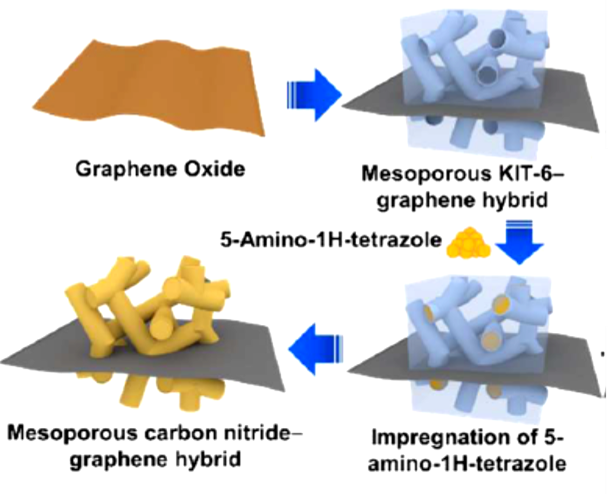

Ordered Mesoporous C3N5 with a Combined Triazole and Triazine Framework and Its Graphene Hybrids
In Young Kim1*, Sungho Kim1, Xiaoyan Jin2, Selvarajan Premkumar3, Goutam Chandra3, Namâ€Suk Lee4, Gurudas P. Mane5, Seongâ€Ju Hwang2, Siva Umapathy3, Ajayan Vinu1*.
Angew. Chem. Int. Ed., 2018, 130 (52), 17381-17386 (Impact Factor: 12.257)
1Global Innovative Center for Advanced Nanomaterials (GICAN), School of Engineering Faculty of Engineering and Built Environment, The University of Newcastle Callaghan, NSW 2308, Australia
2Department of Chemistry and Nanoscience, College of Natural Sciences Ewha Womans University, Seoul 03760, Republic of Korea
3Department of Inorganic and Physical Chemistry, Indian Institute of Science, Bangalore 560012, India
4National Institute for Nanomaterials Technology (NINT), Pohang University of Science and Technology (POSTECH), Pohang 37673, Republic of Korea
5Sunandan Divatia School of Science, SVKM’S NMIMS, Mumbai 400056, India
*Corresponding author
Abstract
Mesoporous carbon nitrides (MCN) with C3N4 stoichiometry could find applications in fields ranging from catalysis, sensing, and adsorption-separation to biotechnology. The extension of the synthesis of MCN with different nitrogen contents and chemical structures promises access to even a wide range of applications. Here we show mesoporous C3N5 with a combined triazole and triazine framework prepared via a simple self-assembly of 5-amino-1Htetrazole (5-ATTZ). We are able to hybridize these nanostructures with graphene by using graphene-mesoporous silica hybrids as a template to tune the electronic properties. Density functional theory calculations in combination with various spectroscopic analyses clearly demonstrate that the C3N5 consists of 1 triazole and 2 triazine moieties. The triazole-based mesoporous C3N5 and its graphene hybrids are found to be highly active for oxygen reduction reaction (ORR) with a higher diffusion-limiting current density and a decreased overpotential than those of bulk g-C3N4. We expect that this simple approach to the triazole-based mesoporous C3N5 could be extended for the preparation of series of new class of MCN nanostructures and their hybrids
Online Link of the paper - https://doi.org/10.1002/anie.201811061

Figure 1. (A) Schematic model of synthetic procedure for triazole-based mesoporous C3N5-graphene hybrids